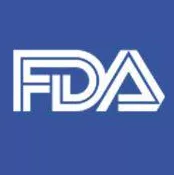Pandemic Challenges Highlight the Importance of the New Era of Smarter Food Safety

In March, we were a few days away from announcing the release of the New Era of Smarter Food Safety Blueprint when the U.S. Food and Drug Administration (FDA)'s focus turned to the COVID-19 pandemic. Our plans for the New Era initiative were rightfully put on hold in order to prioritize the agency’s COVID-19 response. As a public health agency, we will always prioritize any threat to the health of the American people.
The FDA will release the blueprint in the coming weeks, outlining our plans over the next decade to create a more digital, traceable, and safer food system. The challenges that have arisen during the pandemic have made it clear that the actions called for in the blueprint will strengthen how we approach the safety and security of the food supply, not just in the normal course of events but especially in times of crisis.
In fact, over the past few months we have revised the blueprint in light of the lessons learned during the pandemic. It is clear that COVID-19 has accelerated the need for these measures. Some elements of the blueprint are particularly meaningful now, and we’d like to touch on these, starting with tech-enabled traceability.
Enhanced Traceability Could Increase Supply Chain Visibility
Emerging technologies, such as blockchain, make it easier to track and trace products through the supply chain—from the time that they are grown or manufactured, until purchased by a consumer, and back through the supply chain. When the agency originally developed the blueprint, we knew that these new technologies could be game-changers in facilitating a more rapid traceback of a contaminated food to its source in the event of a foodborne outbreak.
What became clear during the pandemic is that enhanced traceability is also a helpful tool in understanding supply chain impacts in the event of a public health emergency. Enhanced traceability, coupled with advanced analytical tools, could provide greater supply chain visibility and potentially help the FDA and industry anticipate the kind of marketplace imbalances that resulted in the temporary spot shortages of certain commodities we’ve seen in recent months. And it could help us anticipate and help mitigate the kind of food waste we saw when food producers lost customers in restaurants, schools, and other entities temporarily shuttered by the pandemic. In other words, we believe a digitized food system is likely to be a stronger, more agile, and resilient food system.
Smarter Tools for Prevention, Protections for Foods Ordered Online
Looking for quick answers on food safety topics?
Try Ask FSM, our new smart AI search tool.
Ask FSM →
The blueprint calls for the use of smarter tools, such as root cause analyses to understand how a food became contaminated and predictive analytics that use data to anticipate the likelihood of contamination. And it also calls for other new tools to be explored, such as virtual or remote inspections (which we started as a result of the pandemic), which would have been invaluable in the current public health emergency.
Another New Era focus identified in the blueprint is the safety of foods ordered online and delivered directly to consumers. We’ve seen this trend steadily increase over the years, but it has skyrocketed as families sheltering in place order foods from restaurants and grocery stores online and by phone, often for the first time. So, this question becomes even more important—how do we ensure that these foods are produced, packed, and transported safely directly to consumers? Here again, the need for best practices has been accelerated by COVID-19.
Food Safety Culture on the Farms, in Food Facilities, and at Home
Last but not least, the New Era speaks to the establishment and support of food safety cultures on farms, in food facilities, and at home. The pandemic shined a light on what it truly means to have a food safety culture. It’s about the people who work on farms and in facilities accepting responsibility for producing safe foods and also about keeping those people safe when co-workers are sick. It’s about educating consumers on the best food safety practices when cooking at home, which more people are doing now. Taking responsibility and protecting each other is not just the foundation of a food safety culture; it mirrors one of the primary lessons from COVID-19, that we—government, industry and consumers—must all work together to help keep each other safe.
For all the recent challenges, we have been greatly impressed by the resilience of the food system. Despite all the pressures and all the imbalances, consumers can still go to the supermarket or go online and have access to thousands of safe food products, which is a tribute to the commitment of the food industry.
We have been equally struck by the positive impact of partnerships between the FDA and our local and state regulatory and public health counterparts, and the strength of relationships between federal partners—including the U.S. Centers for Disease Control and Prevention, the U.S. Department of Agriculture, and the Occupational Safety and Health Administration—and the food industry. We all have the same goals: to ensure that consumers have access to the foods they need and to protect the food industry workers who have made that possible.
Partnership is a theme woven throughout the New Era Blueprint—and our partners stepped up in a big way during this crisis. The collaboration between government and industry especially was raised by many magnitudes. This bodes well for the New Era, which relies on close collaboration between the FDA and stakeholders in the public and private sectors to keep foods safe.
We are grateful for the dedication and commitment of the FDA staff in the agency’s pandemic response and their foresight in looking to the future. Even though the blueprint release has been on hold, work has continued to begin identifying short- and long-term deliverables, pull together implementation teams in priority areas of work, and further build the internal infrastructure needed to support this work.
When the FDA announced the New Era of Smarter Food Safety initiative last year, the agency was convinced then that its time had come. Now, we know that these are the changes we should embrace, and that this is the path forward to a future in which we are well-equipped to protect the safety and security of our food supply no matter what challenges we face. We will get there together, stronger and more resilient than ever.








